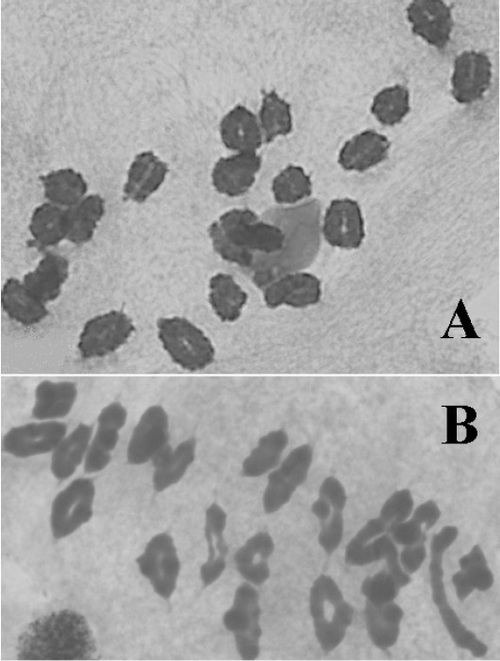In terms of area, the bread wheat producing regions of China comprise the largest area in the world that is constantly threatened by stripe rust epidemics. Consequently, it is important to exploit new adultplant resistance genes in breeding. This study reports the transfer of stripe rust resistance from Aegilops variabilis to bread wheat resulting in resistant line, TKL2(R).
Genetic analysis of the segregating populations derived from a cross between TKL2(R) and a susceptible sister line, TKL2(S),indicated that the adult-plant resistance to Puccinia striiformis f. sp. tritici in TKL2(R) is conferred by a single dominant gene. This gene provided resistance to physiological races currently endemic to China, thus indicating its potential usefulness in wheat breeding.

Figure 1. Chromosome pairing in pollen mother cells
showing the formation of (A) 21 ring bivalents in the resistant,
homozygous bread wheat line TKL2(R) and (B),
20 ring and 1 rod bivalents in a hybrid of TKL2(R) with bread wheat cultivar KL.
Additional Information:
1 Author Information:Dengcai Liu1,2,3*, Zhiguo Xiang2, Lianquan Zhang2,3, Youliang Zheng2,3, Wuyun Yang4, Guoyue Chen 2,3, Chunjie Wan 2 and Huaigang Zhang1
Correspondence: dcliu@yahoo.com.
2 Published : 10 January, 2011,African Journal of Biotechnology Vol. 10 (2), pp. 136-139,
